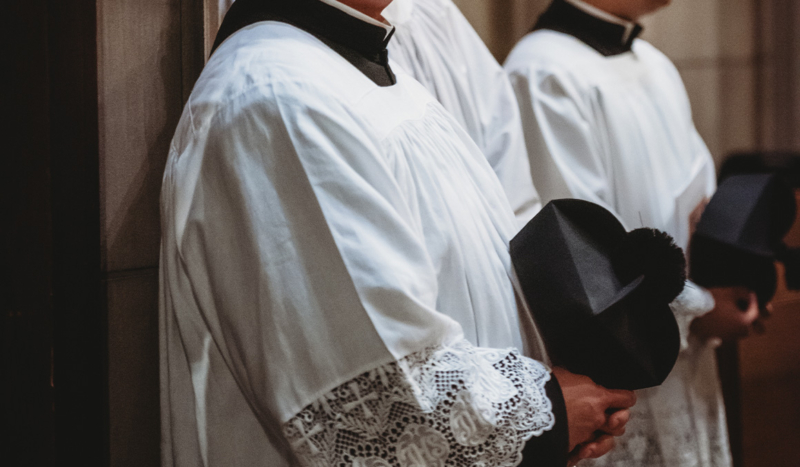
Alison Girone
CV NEWS FEED // The Catholic Diocese of Wichita, Kansas, has emerged as a leader in attracting vocations to the priesthood, according to the recently released “State of Priestly Vocations Report – 2025 Update” by Vocation Ministry.
Vocation Ministry’s report reviewed ordination rates and seminary enrollment in the United States from 2014 to 2023 and found a steady decrease in the number of priestly ordinations in many dioceses, CatholicVote reported.
The Diocese of Wichita, however, defied the national trend and achieved the highest seminary enrollment rate of all United States dioceses, the diocese reported.
Bishop Carl A. Kemme credited the diocese’s achievement to its vibrant culture of Eucharistic Adoration, with many chapels offering perpetual adoration that invites individuals of all ages to encounter Christ.
“This has been in place now for more than 40 years,” Bishop Kemme said. “I sincerely believe this is the greatest factor in our recruiting efforts. Many young men have told me that they heard the Lord speak to them about a vocation to the priesthood in adoration.”
The report examines several key areas, including 10-year averages of ordinations, a priestly availability index, and trends in active priests and seminarian discernment rates. To provide meaningful comparisons, dioceses are categorized into four tiers based on Catholic population size: Tier One (over 750,000), Tier Two (300,000-750,000), Tier Three (100,000-300,000), and Tier Four (under 100,000).
Wichita stands out not only in its Tier Three category but also across all dioceses in two critical metrics. The diocese boasts a priest replacement rate of 195%, indicating that it has enough seminarians to replace its priests. In comparison, Nashville, Tennessee, ranks second at 111%, followed by Lincoln, Nebraska, at 107%.
The same phenomenon, measured over the course of a decade, shows Wichita again leading with a 225% average replacement rate.
Bishop Kemme said that the diocese’s success is also due to the strong relationships between priests and the community.
“Our people, by and large, appreciate their priests and express their love and support of them,” he said.
Other contributing factors cited by the bishop include dedicated Serra Clubs, robust Catholic schools and homeschool programs that emphasize Catholic identity, and high Sunday Mass attendance.
The diocese also implemented a multifaceted vocation promotion program. This includes outreach on university campuses, an annual Quo Vadis retreat for prospective seminarians, and the St. Joseph House of Formation, which supports seminarians during their college years.

